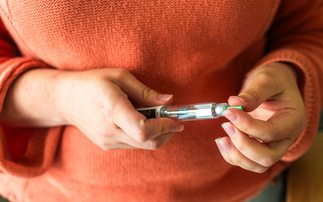Paul Gyseman highlights how cost savings, greater efficiency and increased consumer satisfaction can be achieved through tele-underwriting in its various forms; little ‘t', middle ‘t' and Big ‘T'.
It was not all that long ago that the underwriting process adopted by many players in the UK insurance market was still heavily relying upon a manual paper process – some still do – that required a fact find, using a pen; an application form, with a pen; and often, some form of doctor’s report, completed with a pen. In fact, unlike many other financial service businesses, the insurance industry and, specifically the new business and underwriting process was still very much stuck in the dark ages.
Even as little as five years ago, many providers were still not fully utilising the efficiencies gained by adopting more streamlined, electronic approaches, that not only made the whole process a better experience for the consumer, but also meant that the capture of underwriting-related information could be acquired from the very beginning from the applicant.
A positive step
However, the industry has finally started to move in the right direction by taking a
leaf from the book of general insurance providers and introducing the concept of tele-underwriting and tele-interviewing – the two terms are inter-used but have slightly different meanings – in association with online application forms and expert underwriting engines.
This development has numerous benefits with some cost related and others aligned with creating a more efficient end-to-end process through reducing application-to-policy issue cycle time as well as encouraging more policies to go on the books because not taken ups are less likely to occur.
Numerous suppliers have come to the fore in the aid of business efficiency and many direct insurers are taking up the offer to have their new business and underwriting processes outsourced to third party administrators. Some insurers continue to undertake this process in-house. This is especially those that are working with little ‘t’ and have the infrastructure, trained staff and working practices and systems in place.
Tele-underwriting is not a new concept, having been utilised in the USA for many years. Similarly, general insurers – particularly motor – have also employed this method of acquiring insurability details via the phone and some life companies have also toyed with it on a smaller scale.
So what does tele-underwriting mean? There are several versions of tele-underwriting that range from little ‘t’ to Big ‘T’.
Little ‘t’ is where the applicant is called to clarify an answer from the application form, or to establish further information about a hazardous sport or pastime. This avoids having to send out a paper questionnaire for completion.
Little ‘t’ has been piloted by many direct writers over the past couple of years with encouraging results, especially for products like income protection where musculoskeletal and mental health disclosures can be more accurately assessed.
Big ‘T’ is the process where the applicant is asked all underwriting-related questions by a fully trained tele-interviewer who may be a medically qualified nurse, an underwriter or a tele-operative. They each bring their own speciality to the process and insurers utilising this approach will have their own specific preferences as to how they want it to work.
Evidence suggests quite strongly that this method of gathering information is far better than the paper one, allowing the applicant to better disclose details that would not be possible on a form. It also allows the underwriter to make more decisions based on this disclosure, negating the need to ask for GP reports. The concept of Big ‘T’ is also designed to remove the responsibility from the intermediary in asking sensitive health and lifestyle-related questions and to assist in the drive for straight-through processing, a critical success factor in today’s competitive market.
Third-Party assistance
Tele-underwriting can be outsourced to professional third parties that are able to provide scalability and make this a core activity alongside the gathering of medical evidence. They already have the right people, processes and systems in place and this therefore allows quick and easy entrance to this initiative with relatively low fixed costs for the insurer.
Some third-party service providers use qualified nurses in the tele-underwriting process which is proving to be highly successful due to the quality of the interviewers and their ability to show empathy when discussing sensitive medical impairments. Because they are nurses, they can also command extra trust from the interviewee who is made to feel that they can share their concerns confidentially and are willing to provide materially significant information about their health, treatments and medications, making the underwriters task more objective.
Some insurers will also provide the tele-underwriting outsourcers with expert underwriting rules so the conversation with the applicant can be underwritten as it progresses by uploading the verbal answers into an engine that then provides an immediate quote.
Instant outcomes
Tele-underwriting can additionally be conducted by trained underwriters who are able to make decisions on the risk during the call, or immediately after, which results in a much quicker underwriting acceptance process that benefits everyone, particularly the applicant.
The use of tele-operatives is another method in capturing disclosures from applicants via phone calls, the results of which are passed on to underwriters for assessment.
Should underwriters require further medical evidence, a move towards utilising health and pharmacy screens are initiatives currently gathering pace in the risk assessment process.
Mini health screens can be conducted by trained paramedics or nurses who, because of the mobile nature of the service, can conduct health screens either at the applicants’ place of work, their home, or a local pharmacy where the screening will be undertaken by a trained pharmacist.
The results of these health screens can be uploaded directly and automatically to the underwriter’s computer via smart pens that work with ‘Trackberries’ or from specially written software, shaving weeks off the whole process compared with the more traditional method of requesting a GP report.
These health screens dovetail nicely with the tele-underwriting process and provide a wide range of underwriting specific information that includes: clarifying questions; height; weight; body mass index; blood pressure; plus a host of other parameters that can be requested on a menu style basis depending on the risk factors disclosed by the applicant. They are proving to be a very valuable tool in the risk assessment process and, in many instances, are far more valuable than obtaining a GP report because the tele-interview has already gathered the relevant data from the applicant.
Overall, consumers’ perception and interaction with insurance companies look set to improve to a level where customer service will be a key marker in the choice of provider. The introduction of tele-underwriting has certainly now gained rapid pace and will continue to be a key feature in the underwriting process, bringing greater efficiencies and better experiences to everyone involved but in particular, the customer.
As Bob Dylan sang, “The times they are a changing”.
Paul Gyseman is chief underwriter at Munich Re











